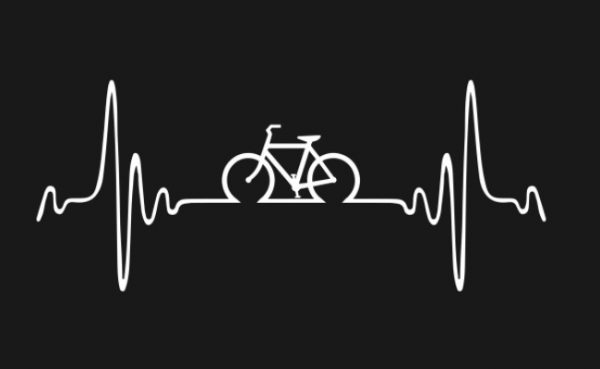Heart Rate Variability. Resting Heart Rate. Functional Threshold Power. Acute Training Load. Ramp Rate. Anaerobic Capacity. Training Stress Score. With all of these metrics, how and why do cyclists still end up overtraining? As it turns out, the data is both a blessing and a curse. It’s not how much data you have; it’s how you use it.

Heart Rate Variability Addresses Systemic Stress
Enter the yogi of metrics. Heart Rate Variability is the measure of how stressed the system is. A brief Google search will show that HRV breaks down heart rate into smaller slices than a minute and measures the variability between peaks. It is assumed that when one is comfortable and relaxed, with few distractions and stresses, that the heart will pump blood somewhat sporadically. Conversely, when either physical or psychological stress begin to accumulate, the heart will beat with consistency that is symptomatic of a “fight or flight” response.
Overtraining Despite ‘All of the Watts’
Despite the data collected from heart rate monitors and power meters, very few cyclists are prepared or diligent enough to dissect the plethora of information on their own. Cyclists with a competent and engaged coach will be better informed but are still at risk of overtraining. Heart Rate Variability might become the key metric in avoiding injury and overtraining. Unlike Chronic Training Load (CTL) HRV can be a personal assessment of your training load, regardless of your training history.
HRV will allow you to tap into your prana and start listening to your heart. Jokes aside, keeping tabs on your HRV will keep your system topped up and healthy.
Heart Rate and Power
The purchase of a heart rate monitor is a good first step in guiding your training. It’s useful when doing steady threshold efforts and can be used to watch fitness progress.
When coupled with Rate of Perceived Exertion (RPE) it can indicate how fatigued you are on a given day, but the relationship between the two is generally inconclusive when judging long term fatigue.
The power meter is the single best tool for training, but the stubborn and resilient can find themselves in a deep pit of overtraining. The game of hitting threshold numbers and smashing anaerobic workouts can have unsuspected psychological and physical implications. The metrics generated by Strava, Training Peaks and Golden Cheetah to assess stress and fatigue are good guidelines, but can frequently lead you into thinking that you aren’t doing enough. Tracking fitness can be addictive and may come at the price of overtraining. Heart Rate Variability will help cyclists put a measure on just how fatigued they are.
Heart Rate Variability in Sport and at Work
The workload at your 9-5, budget concerns, relationship problems and heavy training loads can cause elevated HRV. Monitoring these values consistently will keep you mindful of how your system is on a daily basis. Do you wonder why it’s been hard to focus at work? Are you having trouble sleeping? Or maybe your patience has been pretty short with your family… These are all signs that your body is running on fumes.
Using Heart Rate Variability Daily
A number of applications exist that quantify HRV. Check out Elite HRV (free app) to start your investigation. Not all heart rate monitors will connect to your smartphone, so do some investigating before you buy. Wahoo and Suunto make HRMs that are easily paired with a smartphone. All require the use of a Heart Rate Monitor and will give you a measure of your systemic stress. Use this, paired with RPE to determine if you need a few days off the bike. Keeping HRV in check will all but eliminate burning out mid-season
I’m in Too Deep! Now What?
HRV is not a new measure, just like how yoga isn’t a new activity, but the rise of mobile technology has brought the tool to the consumer. Some clinical studies have shown that meditation, yoga or routine stretching can keep HRV in check. Theoretically, HRV can be restored throughout the course of a single session of meditation.
The next time you’re feeling irritable, stressed, overtired and uninspired, think about going to the local yoga studio for a full body reset instead of jumping on the trainer, or try some stretching a relaxation techniques at home. If you don’t know where to begin, check out Dynamic Cyclist. They have daily, easy to follow stretching videos designed specifically for and by cyclists.